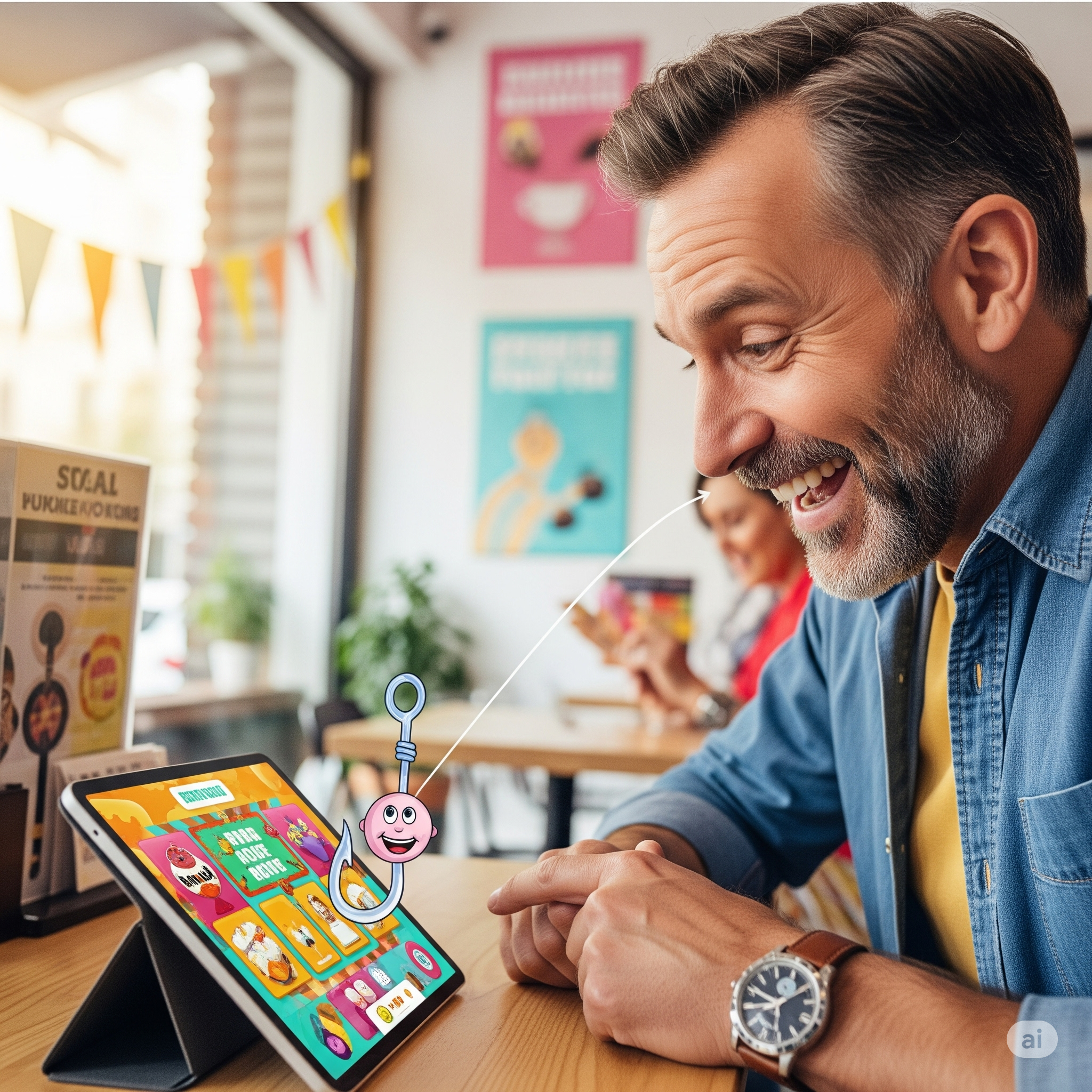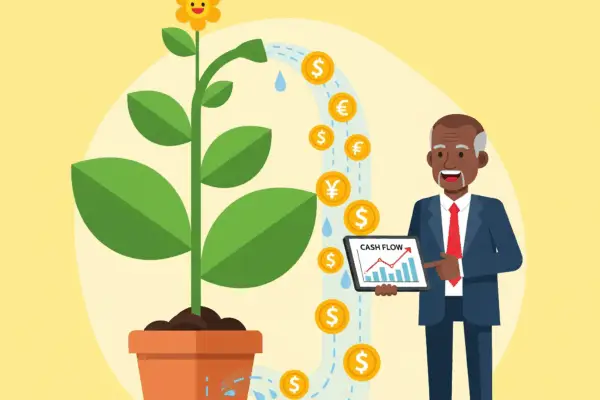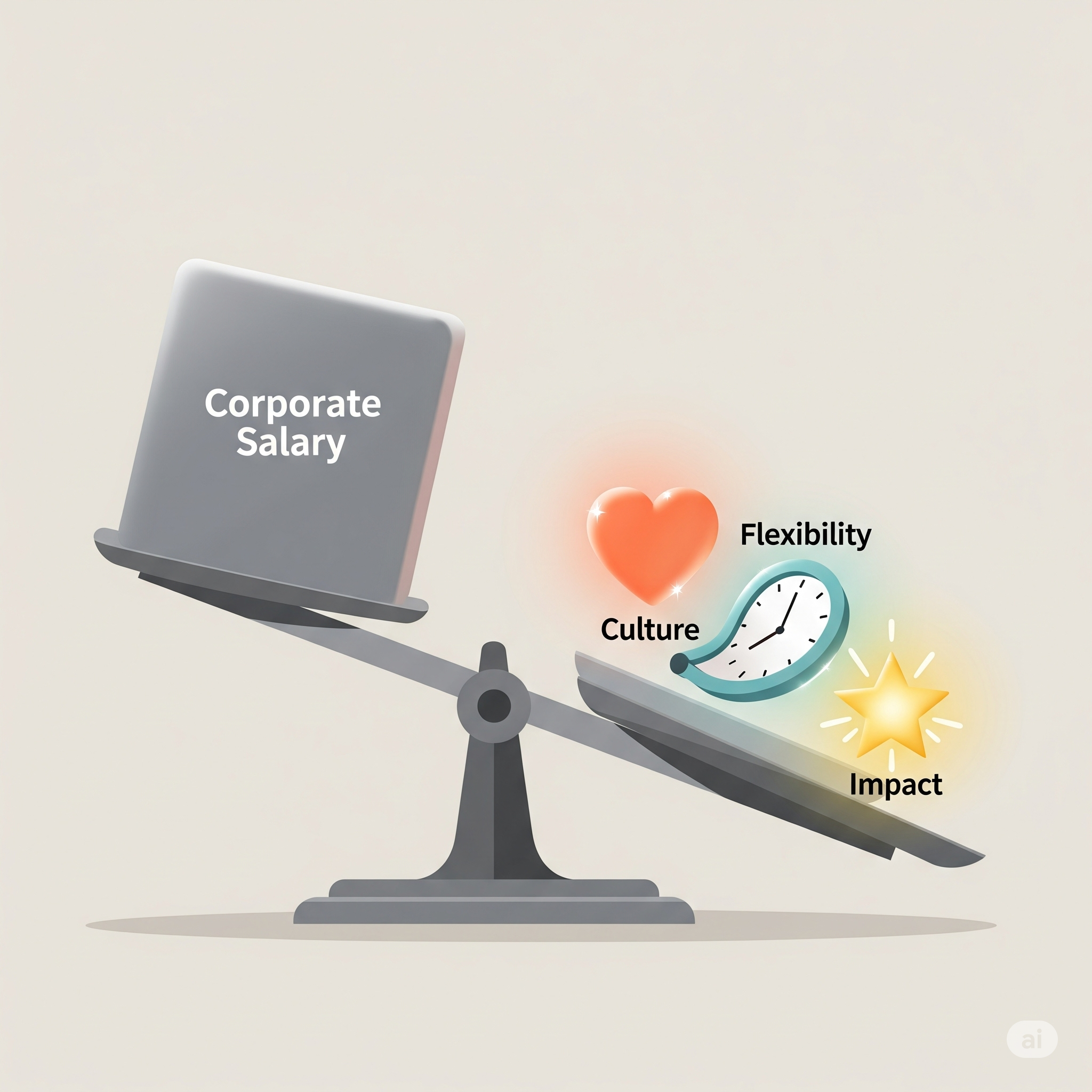Alright, listen up, because what I’m about to share isn’t just another marketing trend, it’s the absolute heartbeat of customer connection in today’s frantic, fragmented world. We’ve all been there, endlessly scrolling, swiping, tapping through a deluge of content. Your potential customers? They’re drowning in it. And here’s the stark truth for every ambitious small business owner out there: if you’re still relying on static ads, passive content, or the old “build it and they will come” mentality, you’re not just missing out, you’re becoming invisible. It’s time to move beyond the scroll. It’s time to grab attention, not just solicit it. It’s time for interactive marketing.
Why is this so vital, especially for a small business? Because you don’t have the monstrous budgets of the corporate giants. You can’t outspend them. But you absolutely can out-engage them. You can out-connect them. You can build a community and a loyal customer base that feels seen, heard, and valued in a way a faceless corporation simply cannot. Interactive marketing isn’t just a fancy buzzword; it’s your secret weapon for cutting through the noise, fostering genuine relationships, and driving conversions without breaking the bank. It’s about transforming passive consumption into active participation, turning casual browsers into captivated customers, and ultimately, transforming your small business into a vibrant, living entity that customers want to be a part of. We’re talking about creating experiences, not just campaigns. And in a world where attention is the new currency, experiences are priceless. So, let’s dive deep into five potent interactive marketing ideas that will not only grab attention but hold it, nurture it, and convert it into tangible growth for your small business.
The first revolutionary idea we’re embracing is what I like to call The Power of Playful Discovery: Interactive Quizzes, Polls, and Surveys. Now, before your eyes glaze over at the word “survey,” let me be crystal clear: we are not talking about boring, clinical questionnaires designed by academics. We are talking about highly engaging, entertaining, and insightful tools that feel less like work and more like a game. Imagine a quiz that helps your customer discover their “perfect coffee blend” based on their personality, or a poll where they vote on your next product design, or a quick survey that helps them identify their biggest pain point which your small business can then magically solve. This isn’t just about collecting data; it’s about personalization, entertainment, and guiding your customer through a delightful journey of self-discovery while simultaneously gathering invaluable insights about their preferences, needs, and desires.
For a small business, the benefits here are manifold and profoundly impactful. Firstly, lead generation. A well-crafted quiz can be a fantastic way to capture email addresses. People are far more likely to provide their contact information if they’re getting something fun or insightful in return, like quiz results or a personalized recommendation. Secondly, customer segmentation and personalization. The answers you collect allow you to understand your audience on a granular level. You can then tailor your marketing messages, product recommendations, and offers with pinpoint accuracy, making your outreach incredibly relevant and effective. This is crucial for a small business looking to maximize every marketing dollar. Thirdly, increased engagement and time on site. When customers are actively interacting with your content, they spend more time on your website or social media profiles, reducing bounce rates and signaling to search engines that your content is valuable. Fourthly, building brand authority and trust. By offering valuable insights or guiding customers to solutions, you position your small business as a knowledgeable expert and a helpful resource, not just a vendor. Finally, and this is a big one, valuable market research at scale. Imagine getting direct feedback on product ideas, understanding purchasing motivations, or identifying gaps in the market, all while your customers are having fun. This kind of data can inform your product development, marketing strategy, and customer service initiatives, giving your small business a competitive edge.
So, how does a small business actually implement this without a tech team and a massive budget? It’s much simpler than you think. There are fantastic, user-friendly platforms out there specifically designed for this. Think about tools like Interact, Typeform, or even the built-in poll features on social media platforms like Instagram Stories or Facebook. You don’t need to code a single line. The key is in the design and promotion. Start by defining a clear objective: Are you trying to generate leads? Segment your audience? Get product feedback? Then, craft compelling questions that are relevant to your small business and your target audience. Make it fun, use engaging language, and ensure the results or outcomes are valuable and easy to understand. Promote your quiz or poll across all your channels: your website, email newsletters, social media, even QR codes in your physical store. Follow up with personalized emails based on quiz results, or use poll results to inform your next big announcement. For a small business, this is a low-cost, high-impact strategy that delivers both immediate engagement and long-term strategic insights. It’s about giving your audience a reason to stop scrolling and start playing, and in doing so, they’ll discover more about themselves, and more importantly, more about how your small business can genuinely help them.
Moving on to our second powerful interactive idea, one that leverages the innate human desire for recognition and connection: Unleash the Community with User-Generated Content Contests and Giveaways. This isn’t just about running a “like and share to win” contest, which, frankly, has become a bit diluted. We’re talking about actively inviting your audience to create content involving your small business, your products, or your industry, and then rewarding them for it. Think photo contests featuring your product in a unique setting, video testimonials sharing their success story with your service, or even a creative caption contest for an image you provide. This is about turning your customers into your most enthusiastic marketing team, and believe me, their authentic voice resonates far more powerfully than any polished advertisement you could ever produce.
Why is this a game-changer for a small business? The answer lies in authenticity and reach. In an age of skepticism, user-generated content (UGC) is inherently trusted. People trust recommendations from peers far more than they trust brands themselves. When your customers share their positive experiences, it acts as powerful social proof, building credibility and attracting new customers more effectively than any paid ad campaign. Beyond trust, UGC contests dramatically expand your reach. Every time a participant creates and shares content featuring your brand, they’re exposing your small business to their entire network of friends, family, and followers. This is organic, viral marketing at its absolute best, and it comes at a fraction of the cost of traditional advertising. Furthermore, these contests foster a vibrant community around your brand. They make your customers feel like they are part of something bigger, creating a sense of belonging and loyalty. For a small business, this is invaluable for customer retention and advocacy. Finally, UGC provides you with a treasure trove of authentic, diverse content that you can repurpose across your marketing channels. Imagine having an endless supply of genuine photos, videos, and testimonials that truly showcase how your products or services integrate into real lives.
Implementing a successful UGC contest as a small business requires careful planning, but it’s entirely achievable. First, define a compelling theme that encourages creativity and directly relates to your small business. For a bakery, it could be “Show Us Your Most Creative Cake Decorating Using Our Mix.” For a service business, “Share Your Story: How Our Service Transformed Your [Life/Business].” Second, establish clear, simple rules and guidelines. Don’t make it overly complicated, or you’ll deter participation. Third, choose an enticing prize that is relevant to your target audience and your small business offerings. It doesn’t have to be a car; a generous gift card, a premium product bundle, or an exclusive experience can be incredibly motivating. Fourth, select your platform. Instagram, Facebook, TikTok, or even a dedicated landing page on your website are excellent choices for hosting and collecting entries. Encourage the use of a unique, memorable hashtag to track submissions and amplify visibility. Fifth, promote, promote, promote! Use your email list, social media, in-store signage, and even collaborations with local influencers or complementary businesses to spread the word. Finally, and crucially, acknowledge and celebrate every participant, not just the winner. Feature their content, share their stories, and create a sense of inclusion. For a small business, this approach doesn’t just generate content; it cultivates brand evangelists who will enthusiastically champion your offerings for years to come.
Now, let’s venture into what might seem like the realm of science fiction, but is rapidly becoming accessible and incredibly impactful for small businesses: Step into the Future with Augmented Reality (AR) Experiences. Hold on, don’t dismiss this as too expensive or too complex for your small business. While full-blown AR apps might be out of reach for some, the entry points are becoming incredibly simple and effective, and the potential for a memorable customer experience is off the charts. AR overlays digital information onto the real world, blending the physical and virtual. Think of it as enhancing reality, not replacing it. It’s about letting your customers “try before they buy” in the most innovative way possible, or adding a magical layer of engagement to your existing products or marketing materials.
Why should a small business even consider dabbling in AR? Because it offers an unparalleled level of immersion and novelty. In a crowded marketplace, standing out is paramount. AR provides a unique, delightful, and highly memorable experience that customers will talk about, share, and remember long after they’ve forgotten a standard ad. It significantly reduces purchase friction, especially for products where visualization is key. Imagine a furniture small business allowing customers to see how a sofa would look in their living room before buying, or a beauty small business letting customers virtually “try on” different makeup shades. This translates directly to higher confidence in purchasing decisions and lower return rates. AR experiences can also bring your marketing materials to life. A simple QR code on your business card or brochure could trigger an AR experience that plays a video message, shows a 3D model of your product, or leads to an interactive game. For a small business, embracing AR, even in its simpler forms, positions you as innovative, forward-thinking, and deeply committed to enhancing the customer journey, creating a powerful differentiator in your local market or niche.
So, how can a small business realistically implement AR without needing a team of developers? The key is to start small and leverage existing, accessible technologies. The easiest entry point for many small businesses is social media AR filters. Platforms like Instagram and Snapchat allow businesses to create custom AR filters that users can apply to their photos and videos. This could be a filter that adds your product to their face (e.g., virtual glasses, hats), or a branded frame, or even a mini-game. These filters are relatively low-cost to develop (or even use templates) and have massive viral potential as users share their AR-enhanced content. Another accessible option is web-based AR (WebAR), which doesn’t require an app download. Users simply scan a QR code with their phone camera, and an AR experience loads directly in their web browser. This can be used for product visualization on your website, interactive instructions for your products, or even a virtual tour of your physical store for remote customers. There are platforms and agencies specializing in creating simple, affordable WebAR experiences for small businesses. For example, a small craft beer company could have a QR code on their can that, when scanned, brings their logo to life with a 3D animation and plays a short video about the brewing process. A small independent bookstore could use AR to bring book covers to life, showcasing author interviews or reading snippets. The perception that AR is only for tech giants is quickly becoming outdated. For a small business willing to experiment, AR offers a cutting-edge way to engage customers and leave a lasting impression that transcends the typical digital interaction.
Our fourth transformative interactive idea focuses on building genuine human connection and authority: Build Bridges, Not Just Brands with Live Q&A Sessions, Webinars, and Workshops. In a world saturated with pre-recorded, polished content, the raw authenticity and immediacy of live interaction stand out. This isn’t just about delivering information; it’s about opening a direct, real-time communication channel with your audience, allowing them to ask questions, share concerns, and receive immediate, personalized responses from you, the expert behind your small business. It’s about demonstrating your knowledge, your passion, and your genuine care for your customers in a way that static content simply cannot.
Why is this exceptionally powerful for a small business? First and foremost, trust and authority. When you show up live, share your expertise, and answer questions directly, you immediately establish yourself and your small business as a credible authority in your field. This level of transparency and direct engagement builds immense trust with your audience, which is paramount for a small business looking to differentiate itself. Second, it fosters community and belonging. Live sessions create a shared experience. Participants feel like they are part of an exclusive group, leading to stronger loyalty and a sense of connection to your brand. They get to interact not only with you but also with other customers, creating a valuable network. Third, direct feedback and market insights. Live Q&A sessions are a goldmine of real-time customer feedback. You’ll hear directly about their pain points, their desires, and their perceptions of your products or services, which can directly inform your business strategy and product development. Fourth, lead generation and nurturing. Webinars, especially those offering valuable education, are excellent lead magnets. Attendees are often highly qualified prospects, and the live interaction allows for powerful lead nurturing, moving them closer to a purchase decision. Finally, the content created from these sessions can be repurposed. While live is king, you can record and share these sessions afterwards, creating valuable evergreen content for your small business.
Implementing live sessions for a small business is more accessible than ever. You don’t need a fancy studio. Platforms like Zoom, Facebook Live, Instagram Live, YouTube Live, and even LinkedIn Live provide straightforward tools for broadcasting. The key is in preparation and promotion. First, choose a topic that genuinely addresses a pain point or provides significant value to your target audience. Think “How to Winterize Your Garden with [Your Product]” for a plant nursery, or “Navigating Small Business Taxes: An Expert Q&A” for an accounting service. Second, promote your session widely across all your channels well in advance, creating anticipation and excitement. Include a clear call to action for registration or to mark their calendars. Third, prepare thoroughly. While spontaneity is good, have a clear outline, key talking points, and anticipate common questions. For a Q&A, invite pre-submitted questions to ensure you have content, and be ready to answer live questions as they come in. Fourth, be authentic and engaging. Let your personality shine through. Encourage participation, acknowledge attendees by name, and make it a conversation, not a lecture. For a small business, this direct, human connection is your competitive advantage. It’s about building relationships, demonstrating empathy, and positioning yourself as the go-to expert who truly cares about solving your customers’ problems. These live interactions don’t just sell products; they build lasting communities and fiercely loyal advocates for your small business.
Finally, we arrive at our fifth and perhaps most addictive interactive marketing idea: Make Engagement a Game with Gamification in Loyalty Programs and Challenges. Gamification is simply the application of game-design elements and game principles in non-game contexts. It’s about leveraging our innate human desire for achievement, recognition, competition, and reward to drive desired behaviors. For a small business, this translates into making the customer journey more fun, more engaging, and more sticky, encouraging repeat purchases, loyalty, and deeper interaction with your brand. Think points, badges, leaderboards, progress bars, challenges, and virtual rewards.
Why is gamification such a potent tool for a small business? Its primary power lies in driving customer retention and increasing customer lifetime value (CLV). In a world where acquiring new customers is increasingly expensive, keeping existing ones engaged and loyal is paramount. Gamification makes this process enjoyable and rewarding, giving customers a compelling reason to stick with your small business. It taps into psychological triggers like the “endowed progress effect” (the closer you are to a goal, the more motivated you are to complete it) and the thrill of achievement. Secondly, it increases engagement and interaction with your brand. When customers are completing challenges, earning points, or vying for leaderboard positions, they are spending more time on your website, interacting with your content, and exploring your offerings. This deepens their relationship with your small business. Thirdly, it provides valuable data. Tracking customer progress through a gamified system gives you insights into their preferences, purchasing habits, and engagement patterns, allowing you to further personalize your marketing efforts. Fourth, it can drive specific actions. Want more reviews? Offer bonus points. Want more social shares? Create a challenge for it. Gamification allows you to incentivize specific behaviors that are beneficial to your small business. Lastly, it creates a sense of exclusivity and community. VIP tiers, special badges, or exclusive access based on progress foster a feeling of being part of an elite group, enhancing brand loyalty.
How does a small business implement gamification effectively? Start by identifying the behaviors you want to encourage. Is it repeat purchases? Referrals? Social media engagement? Website visits? Then, design a system of rewards and challenges that aligns with these goals. This doesn’t have to be complex software development. Many existing loyalty program platforms offer gamification features. For example, a small coffee shop could offer a traditional stamp card, but gamify it by introducing “Double Stamp Tuesdays,” or a “Barista Challenge” where customers try every unique seasonal drink to earn a special badge. An online boutique could implement a tiered loyalty program: “Bronze Buyer,” “Silver Shopper,” “Gold Gazer,” with increasing benefits and exclusive early access to new collections. Customers could earn points not just for purchases, but for leaving reviews, sharing products on social media, or referring friends. Points could unlock discounts, free shipping, or even exclusive products. Consider progress bars on your website showing how close a customer is to their next reward or VIP status. Introduce small, achievable “micro-challenges” like “Visit 3 Product Pages Today” for a small bonus point. For a small business, the beauty of gamification is its flexibility. You can start simple with a point-based system tied to purchases and reviews, and then gradually introduce more sophisticated elements like badges for milestones or leaderboards for friendly competition. The key is to make it fun, transparent, and genuinely rewarding, turning every interaction with your small business into a mini-adventure.
Now, let’s talk about the overarching principles that tie these five powerful interactive marketing ideas together for your small business, and how you can truly make them sing in harmony. The first principle is **Integration**. These aren’t standalone tactics. The most successful small businesses will weave these interactive elements into the very fabric of their customer journey. Imagine a quiz on your website that leads to a personalized product recommendation, which then encourages participation in a UGC contest, followed by an invitation to a live Q&A session where the founders answer questions about those products, all while accumulating points in a gamified loyalty program. Each interaction builds on the last, creating a seamless, engaging, and deeply personalized experience that keeps your customer captivated and coming back for more.
The second crucial principle is **Measurement**. For a small business, every investment of time and money must demonstrate a return. With interactive marketing, the metrics go beyond simple impressions. You’re looking at engagement rates (how many people interacted?), lead quality (how many quiz leads converted to sales?), participation rates (how many people entered your contest?), time spent (how long were they on your AR experience?), and sentiment (what was the qualitative feedback from your live sessions?). Track which interactive elements drive the most leads, which lead to higher conversion rates, and which foster the strongest loyalty. This data will guide your future strategies, allowing your small business to continually optimize its interactive efforts and allocate resources where they yield the highest impact.
Third, and absolutely essential for any small business, is **Budgeting Wisely and Starting Small**. The beauty of interactive marketing is that it doesn’t require a Fortune 500 budget. Many of the tools and platforms mentioned are freemium or have very affordable tiers. Social media platforms provide many interactive features for free. The investment often lies more in creativity, time, and strategic thinking than in massive ad spend. Start with one or two ideas that resonate most with your small business and your audience. Master them, analyze your results, and then gradually expand. Don’t try to implement all five at once. The goal is consistent, genuine engagement, not overwhelming your team or your customers. Remember, the true power for a small business lies in building relationships, and that takes time and authenticity, not necessarily a huge budget.
Fourth, always prioritize **Authenticity and Value**. Don’t just do interactive marketing for the sake of it. Every quiz, contest, live session, AR experience, or gamified challenge must offer genuine value to your audience. Is it entertaining? Is it educational? Does it solve a problem? Does it help them feel more connected or recognized? If your interactive efforts feel forced, generic, or solely self-serving, they will fall flat. For a small business, your unique personality, your passion, and your genuine desire to serve your customers are your biggest assets. Let them shine through in every interactive experience you create. Be real, be human, and your audience will respond in kind.
Finally, embrace **Consistency and Iteration**. Interactive marketing is not a “set it and forget it” strategy. It requires ongoing effort, fresh ideas, and a willingness to adapt. Your audience’s preferences evolve, new technologies emerge, and your small business will grow. Regularly review your interactive campaigns, seek feedback from your customers, and be prepared to iterate, improve, and try new things. The most successful small businesses are those that are agile and responsive, constantly seeking new and better ways to engage their community and deliver exceptional value. This continuous cycle of creation, engagement, learning, and adaptation is what will keep your small business at the forefront of customer attention.
So there you have it. Beyond the endless scroll lies a vibrant, dynamic world of interactive marketing, a landscape ripe with opportunity for every small business owner daring enough to seize it. This isn’t about flashy gimmicks; it’s about fundamentally rethinking how you connect with your customers. It’s about transforming passive observers into active participants, turning transactions into conversations, and building a loyal community that doesn’t just buy from you, but genuinely loves and champions your brand.
The days of shouting into the void are over. The future belongs to those who invite participation, who build bridges, who make every interaction a memorable experience. You have the passion, you have the expertise, and now you have five powerful, actionable ideas to start grabbing attention like never before. Don’t just stand by and watch the world scroll past your small business. Dive in, get interactive, and watch your engagement, your conversions, and your community flourish. Your customers are waiting to play, to discover, to connect. Go out there and give them an experience they can’t resist. The scroll stops here.



